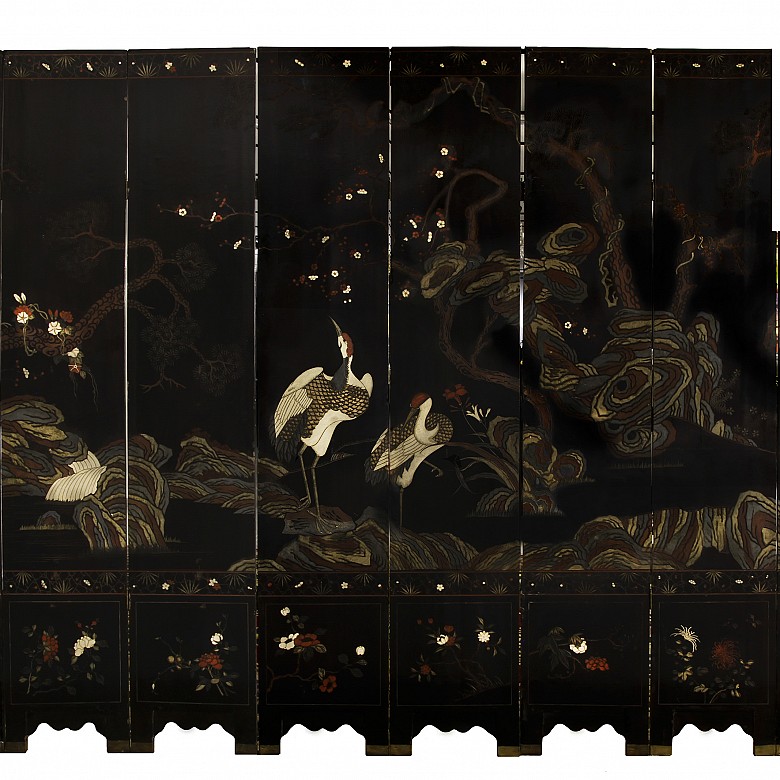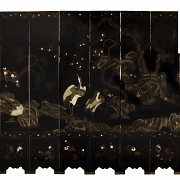LIVE AUCTION MARCH 2022 - FIRST SESSION: ASIAN ART
A large eight-leaf "Palace ladies" lacquer screen, Qing dynasty.
Press 'Program an autobid'in order to confirm
Eight-leaf screen delicately carved in lacquer. The technique used is called "coromandel lacquer" and consists of the application of uniform layers of lacquer, on a wooden core, and then carved designs on the surface. Next, the elements are polychromed with brightly colored pigments and gold. This type of work comes from southern China, although it was originally thought that they came from the Coromandel region, hence the name of the technique.
This piece was made during the Qing dynasty. The best lacquer carvings for decorative screens were produced at this time. It highlights the depth, the details of the anatomy, the architecture and the passage.
In the centre, we see a large panorama of the summer palace in the Forbidden City, where the women and children live. There are several buildings surrounded by a well-kept garden with a bridge, a river, trees and rocks with flowers. The central building stands out for its central staircase decorated with a mosaic of a dragon and a roof with carved and polychrome beams. The scene is surrounded by a frame of dragon medallions and finally with "hundred antiques", which are considered ritual objects. These scenes come from Ming dynasty paintings that were used to inspire the decoration of lacquer screens during the Qing period.
The back is decorated with another panorama with two cranes in a wonderful rocky landscape with water and trees. In this case, it is surrounded by a border with leaves, and then panels with bouquets of flowers and leaves.
Coromandel lacquer screens have been admired by collectors in both Asia and the West, and have been perfectly incorporated into European interiors for hundreds of years. Specifically, the panels with palace scenes are the most valued for their scenic beauty and color.
Total size: 245 x 336 cm; Leaf: 245 x 42 cm
References: Bonhams, London, November 5, 2019, Lot 597.
Provenance: A Spanish private collection.


